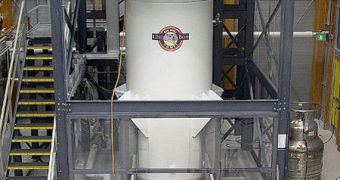For scientists at the Florida State University (FSU), Christmas gifts came in the form of the world's most powerful high-field 'resistive' magnet. With the new instrument, the National High Magnetic Field Laboratory (NHMFL) again becomes the world leader in high magnetic field research, the university announces. The 36-Tesla magnet exited its testing phase in late December, and is now operational and ready to go. The scientific instrument is about 1,200 times more powerful than the standard refrigerator magnet, the team of physicists operating it reveals.
“This latest world record is a credit to the ingenuity of the magnet lab's engineers. The magnet lab's competitive edge in science and technology depends on continuous enhancements to the lab's facilities, and users will be thrilled to reach higher fields without increasing the amount of electric power required to get there,” physicist Nathanael Fortune says. He is the chairman of the National High Magnetic Field Laboratory's User Committee, and also an associate professor of physics at the Smith College, in Massachusetts.
The previous world record was held by a magnet at the Grenoble High Magnetic Field Laboratory, in France, which has a power of 35 Tesla. The new FSU instrument is in fact an upgrade from an existing resistive magnet at the university, but that is now capable of generating even higher magnetic fields. When it comes to achievements and recognitions in the strength of field, and other key measures of a magnet's capacities, the NHMFL boasts no less than 13 world records, at last count. The expert team at the lab constantly fine-tunes, tinkers with and rethinks the design of its instruments, so as to ensure that they always produce the highest magnetic fields possible under existing technologies.
“We believe this magnet has the potential to reach even higher fields. We plan to upgrade our other 35-Tesla magnet this year as well. And our wider-bore, 31-Tesla magnets will be upgraded to around 33 Tesla – which will be a new record in the 50-millimeter (1.97-inch) category,” NHMFL Resistive Magnet Program Manager Jingping Chen says. The experimental space in the new, 36-Tesla magnet is of about 32-millimeters (1.25 inches), and the FSU physicists say that they will use it primarily to conduct physics and materials science research.

 14 DAY TRIAL //
14 DAY TRIAL //